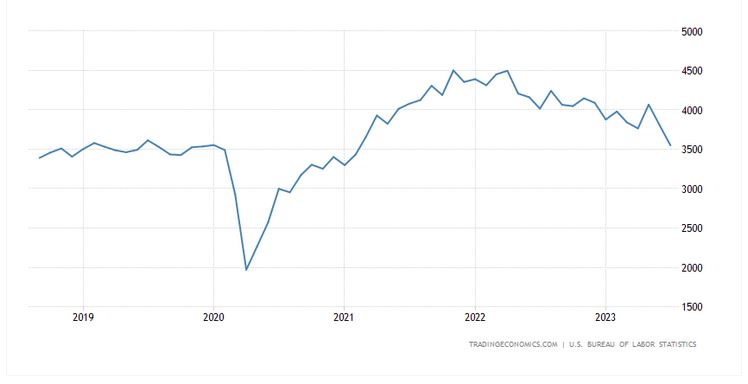
Believe it or not, a lot of business owners don’t take the time to create standard operating procedures.
After working as an HR and leadership consultant for many years now, I’m sad to say I’ve seen this time and time again across all kinds of different clients in a variety of industries.
Either they come to me to write their standard operating procedures because they’ve never bothered to do it themselves, or when I bring it up, they explain that this just isn’t a priority for them, as they don’t think it’s necessary.
Whatever excuse they choose to use, from my perspective, the problem is many business owners just don’t see the value in standard operating procedures.
But the truth is, if you don’t have these procedures in place, your business can end up suffering some serious consequences.
No one could have predicted that the pandemic was going to take place, for instance, and no one knew that it would become a deciding factor in the record turnover we’ve been seeing over the last few years.
As you can see from the graph below, U.S. Bureau of Labor Statistics data, compiled by Trading Economics, shows the massive increase in job quits that we’ve seen since the start of the pandemic.

At the same time, this also gives us a poignant reminder of the way that these kinds of unexpected events can affect human behavior, particularly when it comes to employment.
I’m no statistician, but if you look at the graph, there was a sharp decline in job quits in early 2020, shortly after the pandemic started, probably as a result of people’s uncertainty about what was to come.
Since then, the number of quits has skyrocketed, hitting an all-time high in November of 2021, when more than 4.5 million Americans quit their jobs.
Without a doubt, much of this happened because of the way our lives were upended by the pandemic, and its associated restrictions, which undoubtedly caused many people to quit their jobs as a result of things like health and safety concerns, issues with childcare due to school closures, burnout, depression, anxiety, or just the reevaluation of priorities in a time of crisis.
Luckily, the number of quits is slowly but steadily decreasing, but even still, these numbers are way above the historical average, and there’s no telling what might happen in the future.
The point I’m trying to make is that nobody knew the pandemic was coming, and even when it began, the effect it was about to have on our lives was pretty much unfathomable for most of us.
And when all these people quit their jobs at companies that had failed to create standard operating procedures, the owners of those businesses were given a serious wake-up call, as they had to scramble to figure out what they were going to do without these procedures in place.
This underscores the vastly underappreciated importance of standard operating procedures, which are created to prepare for these kinds of unforeseen circumstances.
So, if you have questions about the importance of SOPs, or you want to learn how to write SOPs for your business, then you’re going to want to keep reading.
Because in this article, I’m going to explain why standard operating procedures are so important and offer some tips to help you get started on writing SOPs for your business.
Why Are Standard Operating Procedures Important?

Standard operating procedures, otherwise known as SOPs, are sets of step-by-step instructions that explain how to properly perform an activity that pertains to the operation of your business.
They include things like guidelines, processes, checklists, key contacts, deadlines, standards, project plans, and anything else that would be required for a new employee to understand how to take the reins from someone they’re replacing.
Among many other benefits, they’re also great as a reference for anyone who needs a reminder of the policies and procedures they’re expected to follow.
With that in mind, here are some of the reasons why standard operating procedures are so important for your business:
Consistency and Quality Assurance
SOPs establish a set of standardized processes and procedures that all employees must follow.
This consistency ensures that tasks are performed in the same way every time, regardless of who is performing them.
As a result, your business can maintain consistent product or service quality, which is essential for meeting customer expectations and regulatory requirements. Consistency also helps reduce the likelihood of errors and defects, which can be costly in terms of time, resources, and reputation.
Regulatory Compliance
In many industries, regulatory bodies set strict standards and guidelines to ensure safety, quality, and compliance with laws and regulations.
SOPs provide a documented record of how specific tasks are performed in accordance with these regulations. This documentation not only helps you to meet regulatory requirements, but also serves as evidence of compliance during audits and inspections.
Training and Onboarding
Standard operating procedures play a vital role in employee training and onboarding processes.
They serve as comprehensive guides that new employees can refer to when learning their job responsibilities, and can also help to accelerate the learning curve and ensure that your employees understand how to perform their tasks correctly and safely.
Moreover, SOPs are valuable resources for ongoing employee training and development, allowing you to maintain a skilled and knowledgeable workforce.
Efficiency and Productivity
SOPs streamline processes by eliminating guesswork and reducing the need for employees to figure out how to perform tasks on their own.
This increased efficiency leads to time savings and improved productivity, as your employees can focus on executing tasks rather than troubleshooting or searching for information.
Additionally, well-designed SOPs often include best practices and time-saving tips, further enhancing efficiency throughout your organization.
Risk Mitigation and Emergency Response
As we learned during the pandemic, standard operating procedures are essential when it comes to risk management and emergency preparedness because they outline step-by-step procedures for handling various situations, including emergencies and crises.
Having clear and well-documented SOPs in place can significantly reduce the impact of unexpected events on your business, as your employees will know how to respond swiftly and effectively.
At the same time, when someone does quit, or for whatever reason can’t work, having SOPs will help you save time and money, not least because it will allow you to properly train new employees.
And while someone else has to do the job in the meantime, those standard operating procedures will be their bible, allowing them to take over while you find a replacement.
How to Write SOPs for Your Business

Unfortunately, I can’t give you a complete step-by-step guide to creating SOPs, as it would probably take you all day to read this blog post.
But considering the fact that so many businesses still haven’t prepared standard operating procedures, I thought I should provide some pointers on best practices to help you get the process started.
That being said, here are some tips on how to write SOPs for your business:
Understand Your Audience
Before you start writing an SOP, it’s crucial to understand who will be using it and consider the knowledge and experience level of the intended readers.
If the SOP is for employees with diverse backgrounds or includes technical content, make sure you’re not being too detailed or too vague.
In any case, you should use clear, concise language and avoid jargon that may not be universally understood. And if you think it’s necessary, include a glossary or definitions of terms to ensure clarity.
Follow a Clear Structure
Make sure to organize your SOP in a clear and logical manner.
Start with a title that describes the task or process the SOP covers, and don’t forget to include a table of contents if the document is lengthy.
In addition, you can use headings and subheadings to break down the content into manageable sections.
A typical structure for an SOP includes:
- Purpose: Explain the objective of the SOP and why the process is important.
- Scope: Define the boundaries of the procedure and specify when and where it applies.
- Responsibilities: Identify the roles and responsibilities of individuals involved in the process.
- Materials and Equipment: List any required tools, materials, or equipment.
- Procedure: Describe the step-by-step process in a clear, chronological order.
- Safety Precautions: Highlight any safety measures, precautions, or PPE (Personal Protective Equipment) required.
- Troubleshooting: Include instructions for common issues or problems that may arise.
- References: Cite relevant documents, standards, or regulations.
Use Visual Aids and Flowcharts
Sometimes, complex processes are easier to understand with the help of visuals.
That being said, you should consider incorporating flowcharts, diagrams, photographs, or illustrations to complement the text.
Visual aids can provide a quick overview of the process and clarify complex steps, but whatever you do, you’ve got to ensure that the visuals are clear, labeled, and consistent with the written content.
Keep It Up to Date
SOPs are not static documents, and they should be regularly reviewed and updated to reflect changes in processes, technology, regulations, or best practices.
With that in mind, you should establish a system for periodic review and revision and include a revision date on the document to indicate when it was last updated.
At the same time, you should try to encourage employees to provide feedback or report discrepancies they encounter in your SOPs, which can help maintain accuracy.
Test and Validate Your SOPs
Before finalizing an SOP, it’s essential to test it in a real-world setting to ensure it’s practical and effective and confirm that following it will consistently lead to the desired outcomes.
Also, you should make a point of involving employees who perform the tasks covered by the SOP in the testing phase and remember to gather feedback from them to identify any ambiguities or areas that need improvement.
You should also consider conducting a formal review with all the relevant stakeholders, including subject matter experts, supervisors, and safety officers, to ensure that the SOP meets all necessary standards and requirements.
Are you still trying to figure out how to write SOPs and feel like you might need some assistance? Contact us today to find out how we can help.
Business Management